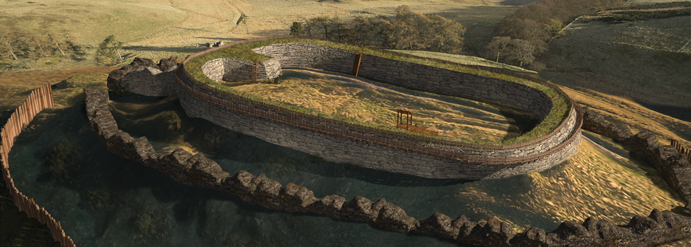
PHOTO: University of Glasgow
UNIVERSITY OF GLASGOW, SCOTLAND – A group of archaeologists has launched a new online app that will allow the public to explore the details of an ancient Scottish site for themselves.
Forteviot is a village just south of Perth in Scotland that is home to thousands of artifacts and archaeological sites that are extremely important to Scottish history, including several ringforts. As the University of Glasgow put it: “no place has a better claim to be the cradle of Scotland…where the Pictish kingdom evolved into the Kingdom of the Scots.”
During prehistory and the Early Medieval period, the site was home to ancient farming peoples who transformed the harsh Scottish landscape into a beautiful, powerful ceremonial center.
In 2007, the University of Glasgow launched The Strathearn Environs and Royal Forteviot (SERF) Project. The archaeologists working on it wanted to explore and excavate ten different hillforts in the surrounding area. This is a long-term research project that, until now, has remained largely exclusive to academic papers, but now the university wants to make it decidedly accessible to the public.
With a grant from Historic Environment Scotland, the SERF Project developed an app in collaboration with the 2DVisLab at the University of Dundee. Using 3-D imaging, they’ve created an environment where the viewer can grab, rotate, and closely examine artifacts recovered from the hillforts. The app will also feature explorable drone footage of the hillforts, superimposed with an artist’s reconstruction of what the sites might have looked like thousands of years ago.
“This app is about wider public engagement surrounding the work we are doing,” Dr. Tessa Poller, Director of the SERF hillforts project and archaeologist with the University of Glasgow explained, “to not only show people the geographical area where these hillforts lie but to also explain how, throughout the various discoveries we have already made, we are able to challenge perceptions about what life must have been like back then. The drone photography and artistic reconstructions puts everything into perspective and will hopefully bring the research we are doing to a much wider audience.”

PHOTO: phys.org
Dr. Poller said that they already have had a lot of students from different schools around the country visit the archaeological sites to learn about the work and the history of Scotland. Many schools are already interested in the app as well.
The app seeks to embody the fluidity of archaeological interpretation of our own history, giving users a firsthand look at how archaeologists form their conclusions about the origin and meaning of the things they find.
“This digital resource strives to explore creative methodologies and outputs which more accurately reflect the multi-layered, multi-vocal and ambiguous processes involved in archaeological interpretation,” Dr. Poller said.
Apps like this one are key to the future of archaeology and the conversation which it creates – both between academics, and between the sites themselves and the public to which they belong.

